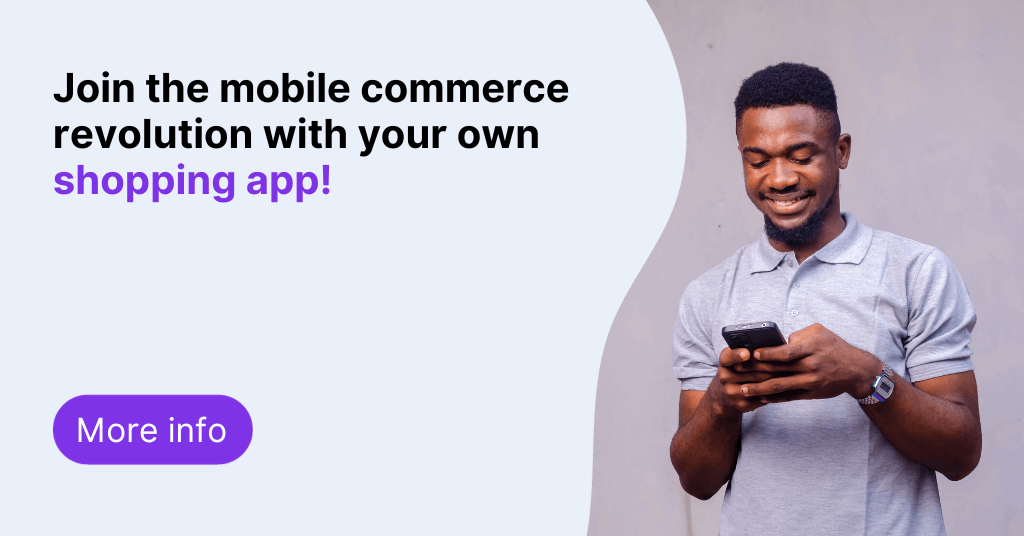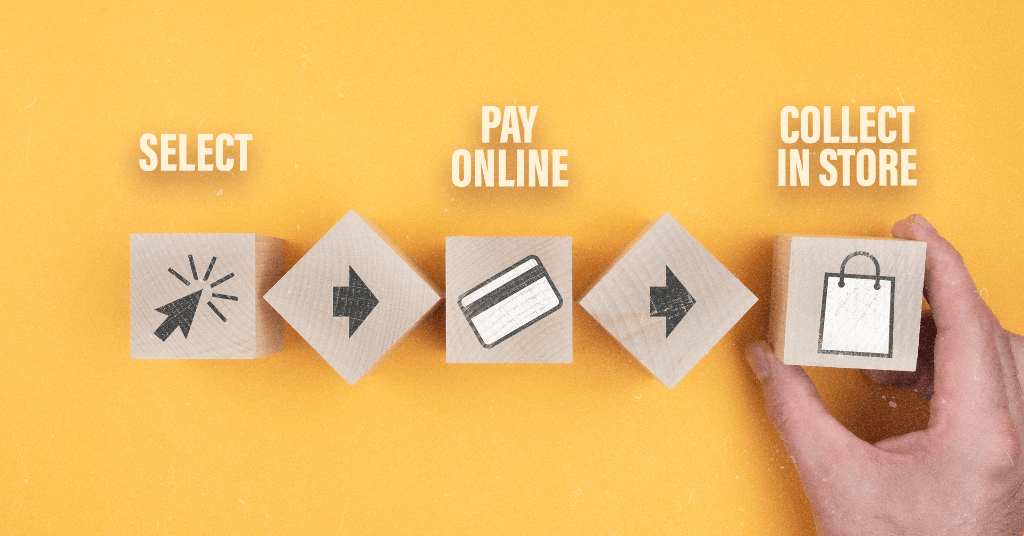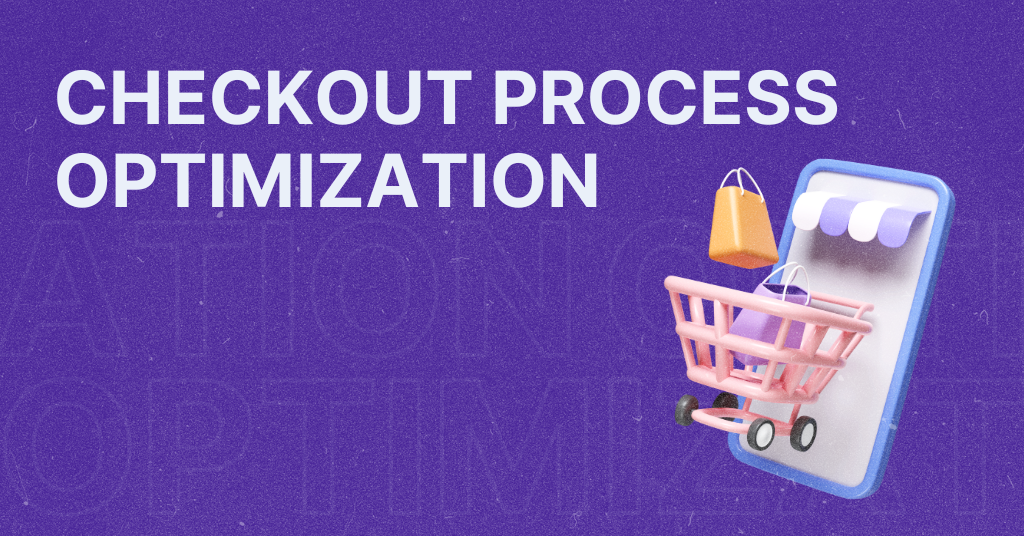
The impact of mobile commerce on brick-and-mortar retailers
The rise of mobile technology has started an era of unpredictable change for brick-and-mortar retailers. The integration of mobile devices into daily life has altered the way consumers engage with commerce.
Mobile commerce or m-commerce enables shopping anytime, anywhere. It pushed traditional retailers to reimagine their strategies, operations, and business models. Let’s see more about the impact of mobile commerce on brick-and-mortar retailers.
Challenges faced by brick-and-mortar retailers
Traditional retailers are facing a range of difficulties as they try to adapt to the digital and mobile-focused environment.
Showrooming
The rise of showrooming, where customers browse products in-store but make purchases online for better prices, has compelled retailers to adapt their pricing strategies and offer unique in-store experiences to drive sales.
Showrooming describes the practice where consumers visit physical stores to examine products in person, only to later make their purchases online, often at lower prices. Having easy access to online marketplaces thanks to mobile phones, showrooming underscores the nature of consumer behavior and the complex interplay between physical and digital retail.
Showrooming offers consumers the advantage of tactile product assessment before committing to a purchase, but it presents a challenge for retailers. They have fewer in-store sales, which makes them reevaluate pricing strategies and enhance customer engagement.
Another challenge made by the impact of mobile commerce on brick-and-mortar retailers is maintaining physical retail spaces, including overhead costs such as rent, utilities, and staffing.
In response to these challenges, brick-and-mortar retailers may need to employ strategies such as:
– price-matching guarantees: to eliminate the price advantage of online competitors, some stores now match lower prices found online, reassuring customers they’re getting the best deal,
– exclusive in-store promotions: special deals available only in physical stores can make the prospect of an immediate purchase more attractive than ordering the same product online,
– in-store bundled offerings: offering in-store exclusive bundled packages at a special price can provide value that online platforms don’t, incentivizing customers to buy on the spot.
All of these can incentivize customers to complete their purchases immediately rather than deferring to online options.

Inventory management
Mobile commerce has boosted the need for real-time inventory tracking, ensuring that the right products are available when customers visit physical stores.
Inventory management stands as a challenge for retailers. As consumers seamlessly transition between online and physical channels, the demand for accurate and real-time inventory information has intensified. The ability to meet customer expectations for product availability has become a pivotal factor in retaining their loyalty and preventing potentially detrimental outcomes like stockouts or overstocking.
The integration of mobile commerce introduces a new layer of complexity to inventory management. Mobile commerce enables consumers to browse products virtually, often leading to higher product discovery rates. Retailers must ensure that their digital representations of inventory mirror the actual availability in physical stores.
The click-and-collect model has deepened this challenge. As customers make online purchases and then visit stores to collect their orders, retailers must guarantee that the ordered items are ready for pick-up, thus requiring seamless coordination between online platforms and in-store operations.
To address these inventory management challenges, brick-and-mortar retailers are adopting advanced technology solutions, including inventory management software and RFID tagging.
Showcasing value
The challenge of showcasing value has taken on a new dimension for brick-and-mortar retailers in the era of mobile commerce. As consumers increasingly turn to their smartphones for product research and price comparisons while browsing in-store, the traditional methods of conveying value through physical displays and interactions must be reimagined.
In the past, brick-and-mortar retailers could rely on in-person interactions, knowledgeable staff, and visual merchandising to communicate the unique value of their products and services. But mobile commerce has introduced a new layer of complexity.
Customers armed with smartphones can instantly access a wealth of information about products, reviews, and pricing, often before even stepping foot in a physical store. This transparency forces retailers to find innovative ways to differentiate themselves.
Consumers’ shopping behaviors have become more dynamic. The path to purchase is no longer linear; it is now a blend of online research, in-store visits, and potentially multiple touchpoints before making a decision.
Retailers must embrace mobile technology to showcase their value proposition in the mobile commerce landscape effectively.
Embracing mobile technology
In an era defined by digital innovation and consumer expectations, brick-and-mortar retailers are navigating uncharted territory as they eagerly embrace the transformative potential of mobile technology.
Mobile apps
Retailers are developing their own mobile apps to enhance customer engagement, offering features such as personalized recommendations, loyalty programs, and mobile-exclusive discounts.
Mobile apps act as an important bridge connecting the physical and digital reality of brick-and-mortar retail. As smartphones become indispensable extensions of modern life, these apps empower shoppers to explore, interact, and make informed decisions while simultaneously offering retailers invaluable insights into consumer behavior and preferences.
These apps help retailers deliver tailored experiences, where each interaction becomes an opportunity to create lasting connections.
And for retailers, mobile apps hold the promise of outstanding data-driven insights. Every tap, click, and search within the app generates information about user preferences, browsing patterns, and purchasing habits. This data empowers retailers to refine their strategies.
However, it is imperative for retailers to craft an app experience that stands out amidst the competition. Ensuring user-friendly navigation, a visually appealing interface, and features that enhance the shopping process are essential components of a successful app.
Maintaining the app’s relevance through regular updates and incorporating emerging technologies like augmented reality (AR) and virtual reality (VR) can keep customers engaged.

AR and VR in mobile apps
With AR (Augmented Reality) and VR (Virtual Reality), retailers can offer interesting experiences, allowing customers to visualize products in their real-world environment before making a purchase.
These technologies have become powerful tools that allow retailers to blend the digital and physical worlds, offering customers immersive and interactive encounters that elevate the shopping journey to new heights.
By overlaying digital elements in the real-world environment, AR enables customers to visualize products in their personal spaces. Whether it’s trying on virtual clothing or envisioning furniture in their living rooms, AR empowers customers to make more informed decisions, reducing uncertainty and buyer’s remorse.
Virtual Reality, on the other hand, offers an unparalleled opportunity for retailers to create immersive experiences. VR has the potential to transport customers to new environments, allowing them to explore virtual showrooms or experience simulations that showcase products in unique and compelling ways.
Mobile payments
Integration of mobile payment solutions like Apple Pay, Google Wallet, and contactless card payments speed up the checkout process.
Mobile payments revolutionize the way customers transact and interact within physical stores. This digital transformation has fundamentally altered the checkout process, offering convenience, speed, and security that align with the fast-paced and tech-savvy expectations of today’s consumers.
For retailers, the adoption of mobile payment solutions brings a multitude of benefits. Mobile payments minimize queuing during peak shopping hours. This efficiency improves customer flow and translates into increased revenue potential.
But the necessity to invest in point-of-sale (POS) systems that support mobile payments can be a barrier for some businesses, particularly smaller ones. Also, ensuring compatibility with a diverse range of devices and platforms requires ongoing technological upkeep.
Omnichannel retailing
Today’s retail heroes are mastering a powerful new strategy: Omnichannel synergy. This approach is the retail world’s answer to today’s tech-savvy shoppers, blending digital convenience with the human touch of in-store shopping. It’s all about creating a smooth shopping adventure, whether customers are clicking a mouse or strolling through store aisles.
What’s the magic about omnichannel? It’s the way it links up every part of the shopping process. Picture this: you spot an item online, check it out in person at the store, and then make the purchase on your phone. Throughout this journey, the shopping experience stays the same, smooth and personalized, just the way you like it.
Retailers love omnichannel for several reasons. It’s a magnet for customers, drawing online browsers into physical stores with the promise of instant pick-up for items shopped online. Once they step inside, who knows what else might catch their eye? Plus, the all-in-one approach works wonders for keeping customers coming back, especially when loyalty rewards and custom deals stretch across every shopping method.
But let’s be real, perfecting the omnichannel game isn’t a walk in the park. It means tying together different tech and systems so that they speak the same language — everything must be spot-on to avoid mix-ups. Every piece of the puzzle, from online ads to in-store design, must tell the same brand story.

Opportunities for brick-and-mortar retailers
Brick-and-mortar retailers are presented with a myriad of opportunities that empower them not only to adapt but also thrive in the evolving retail landscape.
Click-and-collect
The mobile commerce has put the click-and-collect model into the spotlight, offering brick-and-mortar retailers an opportunity to reinvent their customer experience by merging the convenience of online shopping with the immediacy of in-store pickups. This approach enhances customer convenience and satisfaction and serves as a strategic avenue for retailers to drive foot traffic, drive additional purchases, and establish a stronger foothold in the competitive retail world.
Click-and-collect, also known as “buy online, pick up in-store”, addresses the evolving demands of modern consumers who seek the flexibility of online shopping without sacrificing the immediacy of in-person interactions. Shoppers can browse and purchase items from the comfort of their homes and then choose to retrieve their orders from a nearby physical store at their convenience. This symbiotic convergence of digital and physical channels fosters a transition that minimizes shipping times and maximizes customer control over their shopping experience.
This coordination between online platforms and physical stores is essential to ensure that orders are ready for pickup and that customer expectations for accuracy and speed are met.

Individuality and exclusivity
Personalization in retail hinges on using customer data effectively to present tailored recommendations, promotions, and experiences. By analyzing transaction histories, browsing patterns, and demographic details, retailers can determine what each customer likes or needs. This information becomes the foundation for directed marketing efforts, precise product suggestions, and special offers that resonate with individual preferences.
Yet, personalization isn’t just for online interactions. It’s an overarching strategy that includes creating intuitive mobile apps that suggest products based on past purchases and preparing store staff to offer personalized service to returning customers. Even loyalty programs are part of this approach, giving customized rewards based on each customer’s shopping habits.
Retailers need to balance this personalized approach with respect for customer privacy. Complying with data protection regulations is non-negotiable, and transparency with customers about how their data is used is crucial. This careful handling of personalization is what builds trust and keeps customer relationships on positive ground.
Data-driven insights
Mobile commerce’s rise is a goldmine of data insights, changing how physical stores interact with customers. With advancing technology, retailers use data analytics to decode consumer habits, likes, and trends. This knowledge guides smarter choices, streamlines operations, and elevates the shopping journey.
What does this look like in action? Retailers dig into data like purchase records, online browsing trails, and shopper demographics. This deep dive helps spot trends that shape inventory choices, marketing plans, and even store designs. For example, understanding which items people buy together can influence product placements, boosting sales through strategic pairings.
Real-time data plays a role, too, especially in fine-tuning ads and promotions. By tracking when people shop most, which ad platforms work best, or what messaging hits home, retailers can craft campaigns that click with consumers. This approach applies to all shopping avenues, helping unify online and in-store experiences.
But here’s the catch: these insights only make a difference if retailers know how to use them. That means investing in the right tools and skilled analysts who can turn raw data into retail genius. Plus, with all this data flying around, security and precision are top priorities to keep consumer trust and meet privacy standards.
In essence, through the smart use of data analytics, retailers can navigate the twists and turns of consumer preferences, fine-tuning their strategies to stay ahead in the fast-paced world of retail.
Conclusion
The surge in mobile commerce represents a call to action. The impact of mobile commerce on brick-and-mortar retailers is a clear signpost indicating the direction in which the market is moving—toward a world that blends tactile, in-store experiences with the seamless convenience of online shopping.
Retailers must observe the shifting habits of consumers, recognizing that the physical store isn’t being replaced but reinvented. The key lies in integration, using mobile commerce not as a substitute but as a powerful ally. This approach means leveraging technology to enhance what brick-and-mortar stores can offer, from personalized shopping experiences to efficient, data-driven inventory management.
The smart integration of mobile commerce will distinguish proactive retailers from their reactive counterparts. Success will favor those who view this shift as an opportunity for growth and innovation, ensuring their brand remains an essential part of the consumer’s evolving retail journey.
Let’s book a 30-min mobile strategy session and give your shop a boost.
Let’s book a 30-min mobile strategy session and give your shop a boost.


